-
Posts
2,480 -
Joined
-
Last visited
Content Type
Profiles
Forums
Gallery
Events
Posts posted by JSGerson
-
-
Model Shipways Typical Ship’s Boat* (SMALL)
*As labelled on the kit. On the website it’s called: Plank-on-Frame Lifeboat Kit
I am building the Mamoli 1:64 scale 1781 American Privateer Rattlesnake with the help of Robert Hunt’s Practicum. In the process of building the Rattlesnake, I had to make the ship’s boat. The Mamoli kit provided the model builder with a pre-cut wooden shell for the hull from which the builder could then create a completed model (which the Practicum addresses). If I had built the Model Shipways’ version of the Rattlesnake, I would have had to make the ship’s boat “bread and butter” style. Somehow neither option satisfied me. So I decided to go all out and build a ship’s boat from the keel up or as the case turn out, from the keel down.
Model Shipways makes 5 sizes of kits; I purchased the Typical Ship Boat No. MS0108, a Plank-on-Frame construction kit (POF).
Model No.: Size
MS0105 3-3/16'' (81mm)MS0106 3-3/4'' (95mm)MS0107 4-1/4'' (108mm)MS0108 4-3/4'' (122mm)MS0109 5-3/16'' (135mm)This is my first POF as well as my first small boat build, so this will be all new territory for me. Not only that, I won’t have the Practicum to hold my hand until the hull is built.
The kit is fairly simple, one laser cut sheet provided the keel, the bow bulkhead, the transom, and the frames to create the bot’s ribs. A bunch of stock wood pieces which I believe to be Basswood as it is fairly soft was also included. The instructions are straight forward but not overly detailed so a lot of the skills and nuances of model building must be brought with the builder. Unfortunately the resolution of the photo images in the instructions is low and therefore hard to see detail.
- KevinR, CaptainSteve and fnkershner
-
 3
3
-
I saw the woolding's in Lee's The Masting and Rigging of English Ships of War 1625 - 1860 and then I looked at Hahn's plans. They didn't look like wooldings in the plans. Maybe American ships were more progressive than English ships in 1781, I'm no expert. I did think about using the wooldings, but the Hahn's plans showed rings, so I put in rings.
As for the lathe, I'm a total newbie. I really don't know what I'm doing and am learning by trial and error...mostly error.
-
Sport - I thought I mentioned, I used file folder cardboard stock.
-
According to the Practicum, the next step is the construction of the mast top. I’m putting that on hold while I construct the other two masts. I plan to construct all three masts at approximately the same time.
-
The Practicum stated that if one were to use the cheeks that were supplied by the kit they had to be modified to match the plans. My kit did not have the pre-made wooden cheeks so I had to scratch make mine from 1/16” boxwood which the Practicum did address. However, having read Blue Ensign’s build log, I knew that the Cheek was actually made of two pieces, the Hound and the Bib which the Practicum did not address. Following Blue Ensign, I scribed the Cheeks to make it look like the two pieces complete with tree nails. Additionally the mast has a rake to it which must be taken into account. The Practicum did not address this. A slight bow downward angle was added to the top of the cheek (not obvious in the photo) to accommodate the rake in order to make the top of the cheeks level.
-
As stated previous, the Hahn Plans provide cross sectional dimensions (provided one recomputed them for the 74% reduction in Plan size). The only dimension that couldn't be used was the total length of the mast since it didn't reach into the bowels of the model.
Starting with a ¼” dowel, it had to be inserted into the deck opening and marked where it protruded through the forecastle deck. Now the mast could be measured 7” long above the forecastle deck. With the dowel marked and cut to a working length for the lathe, and armed with course sand paper on rasp like holder, and a micrometer, I proceeded to create the contour of the fore mast taking measurements along the shaft of the dowel as material was removed to match the plans. All fine and good.
Now I had to square the top of the mast, not so easy, the mast was now tapered except where it was held by the lathe. I wanted to use the Byrnes saw to provide nice clean and precise cuts. I needed to remove material from the round cross section and end up with a 3/16” square cross section. Not trusting my own measurements, I removed a little at a time, and measuring each time I cut. Also the dowel had to be rotated exactly 90° to make cuts again. What made it so tricky was that I had to hold the dowel at the unmodified ends so it was square against the saw fence.
Actually I did try it the other way first, squaring off the mast top and then placing it in the lathe. Whether I set up my lathe wrong or something else, when the lathe began to turn, the dowel broke as it twisted where it was square cut. It wasn’t pretty.
Surprisingly (or not) the Practicum did not address the iron rings around the mast. Following Blue Ensign’s lead I made them out of file folder card stock. They were colored black with a Sharpie pen and glued into place with Weld Bond glue first gluing one end of the strip then waiting a bit before wrapping and gluing it around the mast and trimming off the excess.
-
NOTE:
The last item in Modeling the Rattlesnake - Chapter 9 is the Ship’s Boat. I’m going to put that off for a bit. I will explain latter.
Rigging the Rattlesnake - Chapter 1
I never thought I’d see the day; it’s been a little over four years to get here.
The Masts
The Fore Mast
The Practicum starts off with the construction of the Fore Mast. The masts do not have a simple shape; they have cross sections that are round, square, octagonal, and rectangular. I did not follow the Practicum exactly. The Practicum would have the builder make the square cross section first and then taper the round cross section area next, but I had a small simple wood lathe I wanted to try.
-
Great video. I've added it to my "How To" library of modeling techniques.
-
That's one good looking ship, Igor! I hope mine comes close to that. I go along with Mr. Larkins, more pictures!
Make sure you protect it by putting it in a case. It would be a shame if it got dusty or damaged sitting out in the open.
For mine, the last few weeks has been going slow for one reason or another but some progress has been made. Hopefully I'll post something new soon.
-
Thank you for clearing that up. I'm no sailor, but it didn't seem practical to have those perfectly round coils on a working ship. It is for that reason (plus I had no luck in making my own "pretty" coils) that I didn't try too hard to put them own my own model for the cannon rigging. Now whether I still did my correctly for a working ship I really don't know. No doubt I will get constructive criticism for that.
Always an education
Jon
-
A pleasure to watch you work!
Any tips on how you would model good looking flat rope coils to look like the first picture in response No. 386?
-
Pardon me for pointing this out as I am not an expert in any stretch of the imagination, but I believe in reply #375, the first two photos are identical yet one is marked "front view" and the other "aft view."
Just wanted to say that it is an education just watching you put this model together.
-
Small Cleats
When building my first wooden model in thirty years, the Evergreen I needed to tie lines to the deck. I was winging it because the kit didn't have any detailed plans for any of the rigging and I knew nothing about rigging. I needed tiny cleats. Somehow I got an idea to use the tiny rail nails used by railroad hobbyist. In cross section a nail is the shape of a T, very similar to a cleat - a very short T.
I filed the edges of the nail head as shown in the diagram below. This gets you the basic shape. You can file the ends to a more pointed shape and add an upward bend to either side. Just drill a hole and insert to the depth required.
- flying_dutchman2, md1400cs, IgorSky and 6 others
-
 9
9
-
Scott - Welcome aboard the Rattlesnake Armada! It's nice to see another "Rattler." There are a number of us building this classic here as you know and probably many of the problems that you may encounter will already have been discussed at length on other builds be they Rattlesnake or others. There are no stupid questions. If you don't know or can't find the info, just ask. Enjoy your build.
-
Welcome aboard the Rattlesnake Armada! There are a number of us building this classic here as you know and probably many of the problems that you may encounter will already have been discussed at length on other builds be they Rattlesnake or others. There are no stupid questions. If you don't know or can't find the info, just ask. Enjoy your build.
-
- sport29652, JPett and Mirabell61
-
 3
3
-
-
-
Spare Main Topsail Mast
The other spare is the Main Topsail Mast which is a little bit more complicated to make. It starts off as a 6 1/8” piece of 5/32” x 5/32” boxwood. I measured off where all the transitions from square to round to octagon sections were. Hahn’s plans conveniently provide the thicknesses of the mast and yards at multiple key points to get the proper shape. One just has to remember that those numbers are for the original scale of ¼”=1’. Each of the dimensions had to be reduced by 74% to get to the 1:64 scale.
-
TBlack - Thanks for dropping in. Your tip for putting in the eyebolt holes now is a good idea. I'm so used to drilling holes and immediately filling them with something it just never occurred to me to leave the holes open. It's so obvious, I just didn't think to do it.
As for perfection, I never expected it, being relatively new to this aspect of model building. I was just trying to convey to others that although it's not perfect, it's good enough for my purposes and those imperfections will not be noticed by 99% of the people who will actually view the physical model. If anything I want to encourage new builders to try their skills and not be discouraged by errors along the way. For me, the enjoyment is the journey of the build, the model is just the trophy of the journey.
-
Spare Main Topsail Yard and Main Topsail Mast
The Practicum’s next step is the Ship’s boat and then the spare Main Topsail yard and Main Topsail mast. I’m reversing the order and building the spares first. The boat has to be mounted on the spares so I might as well make them first.
These are my first ever yard and mast constructions, so bear with me. Luckily any mistakes I make will probably be hidden under the ship’s boat.
CAUTION:
Because the spares are obviously duplicate pieces that have to be made again for the model, Mr. Hunt copied pasted the instructions from Chapter 1 of Rigging of the Rattlesnake into Chapter 9 of Modeling the Rattlesnake. Also since the steps required to make one mast and its yards are duplicated to make the other two, he states that most everything is the same except for the dimensions. All fine and good except that all of the detailed instructions for the yards and mast are for the Foremast. When he copied those instructions into Chapter 9 he didn’t alter the dimensions for the spares which are for the Main mast.
The builder must ignore the dimensions given in Chapter 9 for the spares. They are for the Foremast topsail yard and fore topsail mast. The Builder must take off his own dimensions from Hahn’s plans.
It took me a while to figure this out. Luckily I didn't cut much material before I realized something was amiss.
Spare Main Topsail Yard
Of the two spares, the topsail yard looked easier to create. Staring with a 6” piece of 1/8” x 1/8” boxwood, I rounded and tapered the ends to length as indicated on Hahn’s plans. Interesting enough, neither the Mamoli plans nor the Model Shipways plans provided separate drawings or dimensions for the mast sections or yards. The center of the yard is eight sided. This looked easy enough to do, just trim off the four corners to make eight. Not so, I had a lot of difficultly maintaining an even cut.
If anyone knows a simple yet effective way to precisely cut a square cross section into an octagon, I would love to hear about it. I've got a bunch more carving to do soon.
The cleats were made from 1/16” boxwood. The Practicum did not state to add them, but because of other Practicum omissions I've documented, I couldn't be certain they weren't supposed to be there or not. I just don’t how complete the spares were built when stored on board ship.
-
Sr. Old Salt - This model was built using Robert Hunt's Practicum with the expressed intention that it would NOT be painted. That is why different colored woods were used. That being said, some paint was used primarily for the black color. Ideally I would have used Ebony wood in these areas but my supplemental wood package did not come with any. That may have been a blessing as I have read that Ebony is very hard and difficult to work with and the wood dust is slightly toxic.
I'm no expert on paints so I can't tell you off the top of my head whether to use diluted paint, stain, or dye acrylic or otherwise. If it were me, I would try out some test strips and see what happens.
If anyone out there knows more about this, please jump in.
-
Thanks Martin, I would not have found this section in a timely manner when working on the bowsprit in the near future.
I was wondering why he didn't mention the boomkin, he did only it looks like it was an after thought in the context of things. He states:
The boomkin is made from a piece of 1/16" boxwood cut to a length of about 2". It fits at an angle against the stem on each side just under the bowsprit and rests on the headrail. It is angled outward and slightly downward and typically there would have been an iron plat over the boomkin at the head rail to hold it in place.I must assume the "iron plat" is a typo and he meant "iron plate" because I could find a definition for "plat" that made any sense. -
I had thought about the eyebolts and elected not to install them at this time because I thought a block or something would be attached to them. I reasoned that it would be easier to seize a line or add a block to the eyebolts off-ship and then install the complete component at once like I did for the cannon rigging. I would install eyebolts that are not used (say for use with the running rigging) now if I only knew which ones they were.



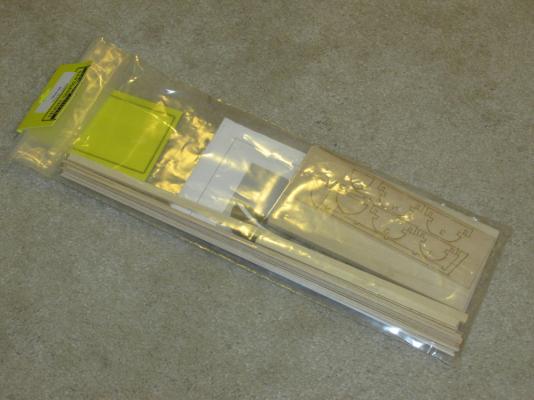
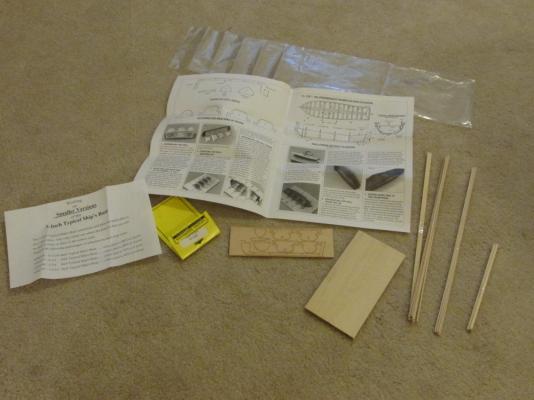
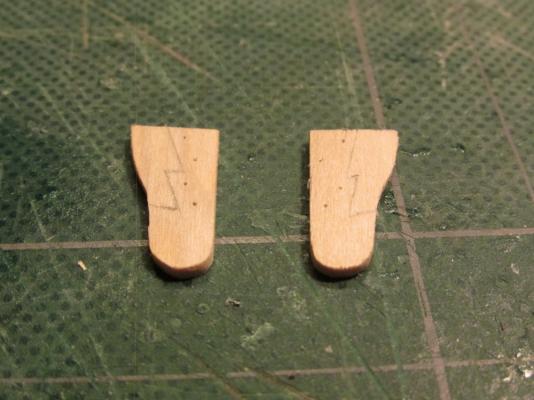
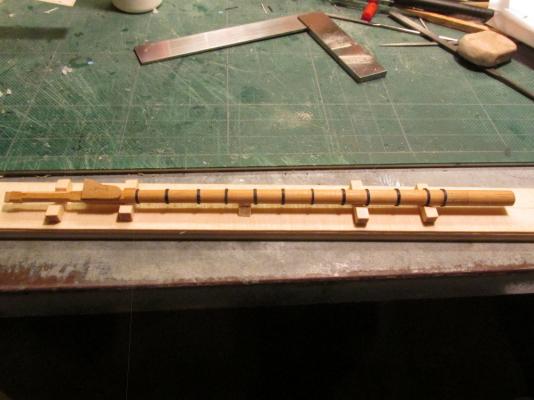
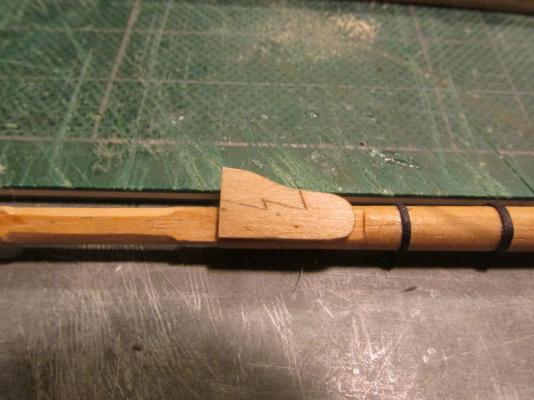
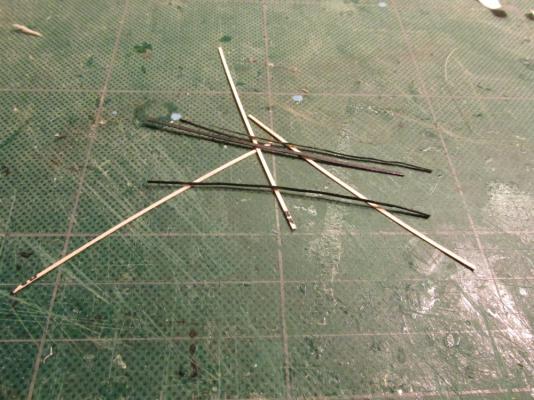
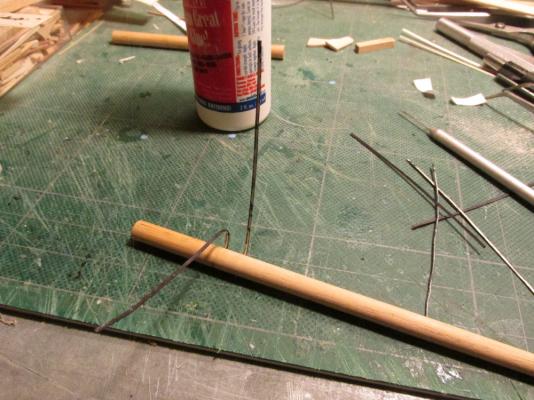
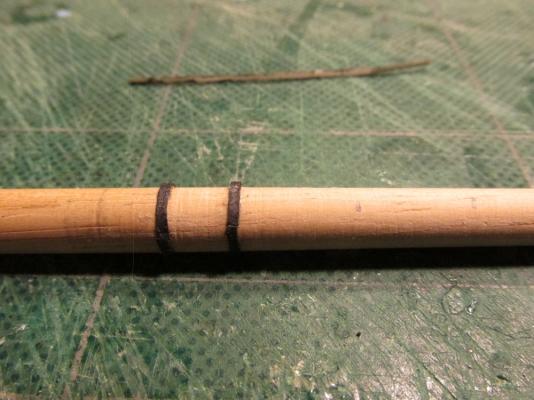
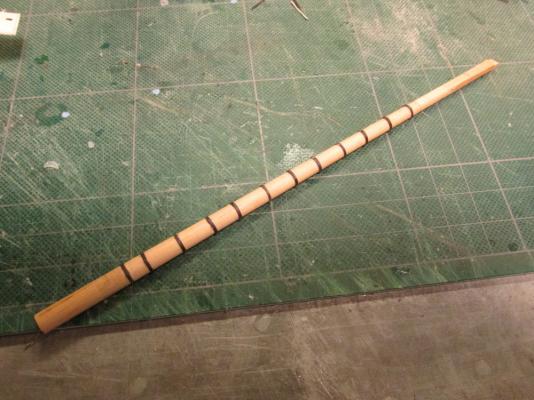
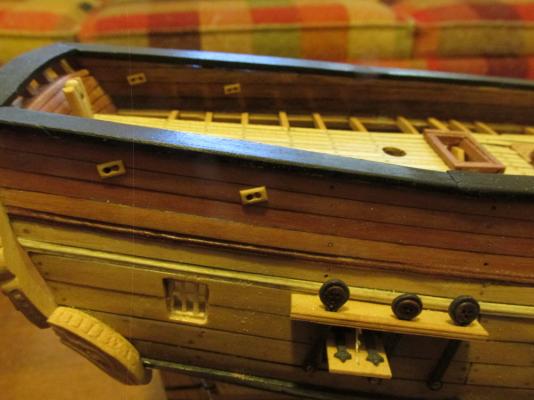
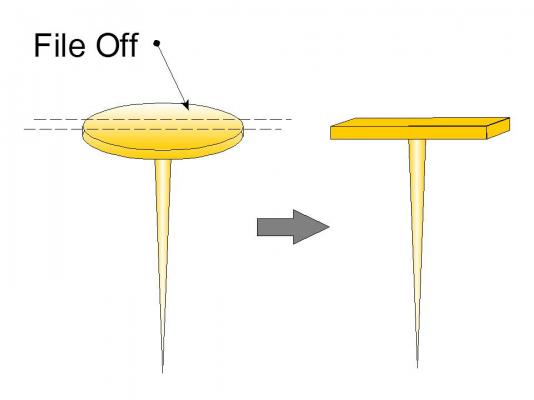
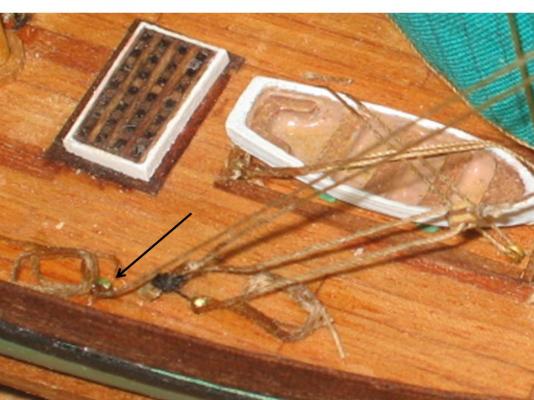
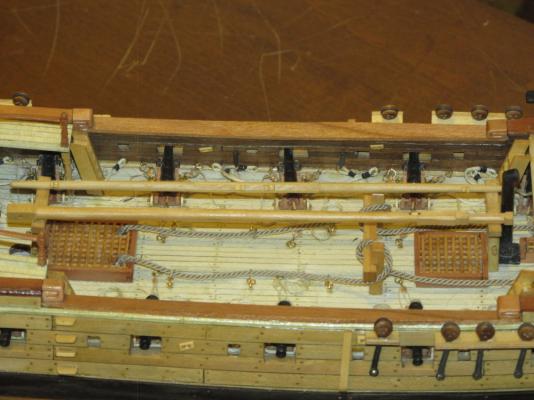
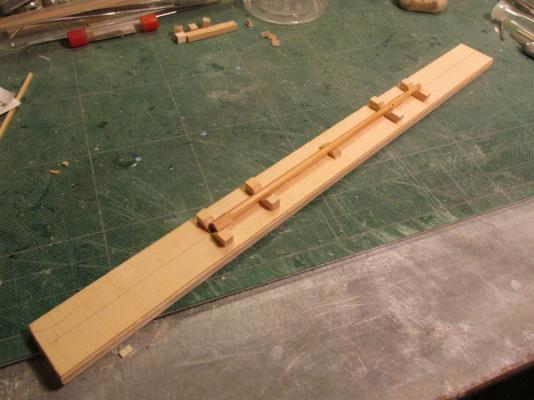
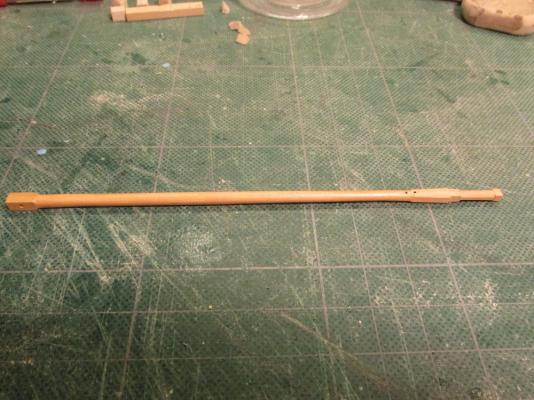
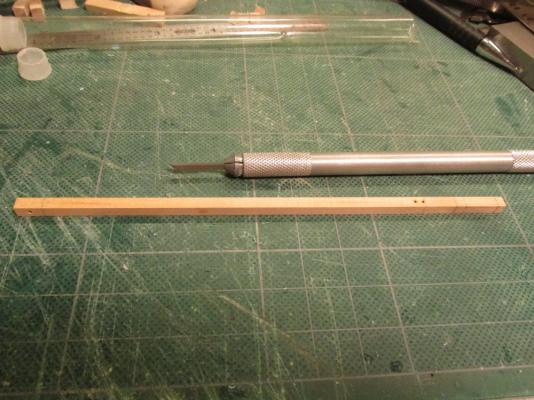
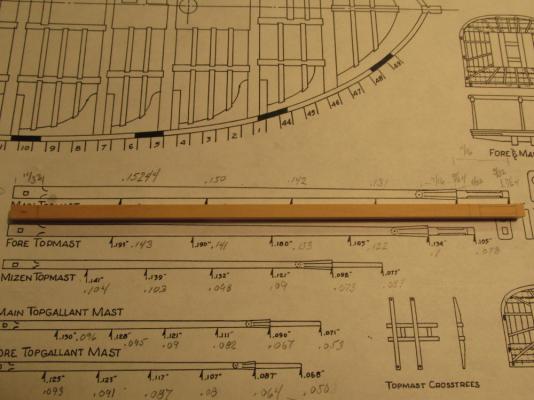
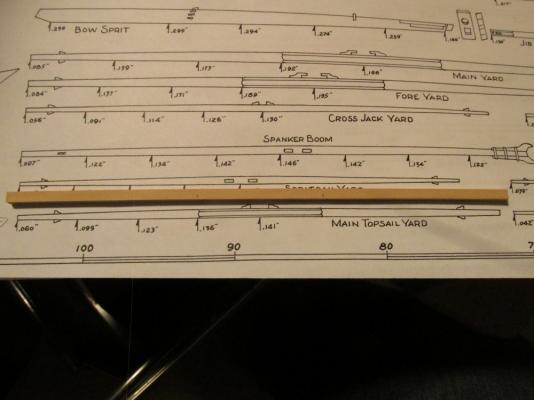
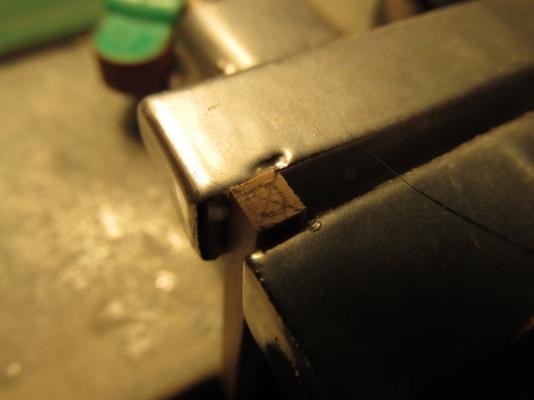
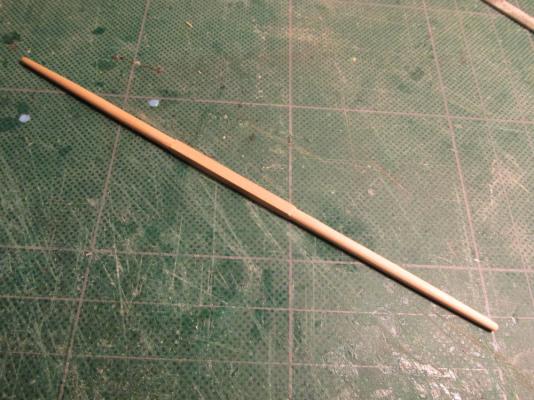
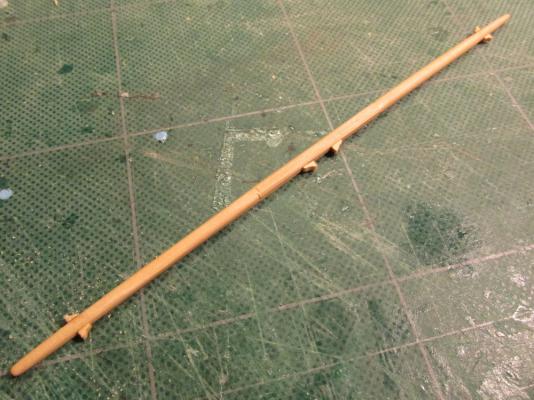
Ship’s Boat by JSGerson - FINISHED - Model Shipways
in - Kit build logs for subjects built from 1751 - 1800
Posted
Assembling the Keel
The single piece laser cut keel is combined with the stem and the stern post. The bow bulkhead and the transom were glued to keel.